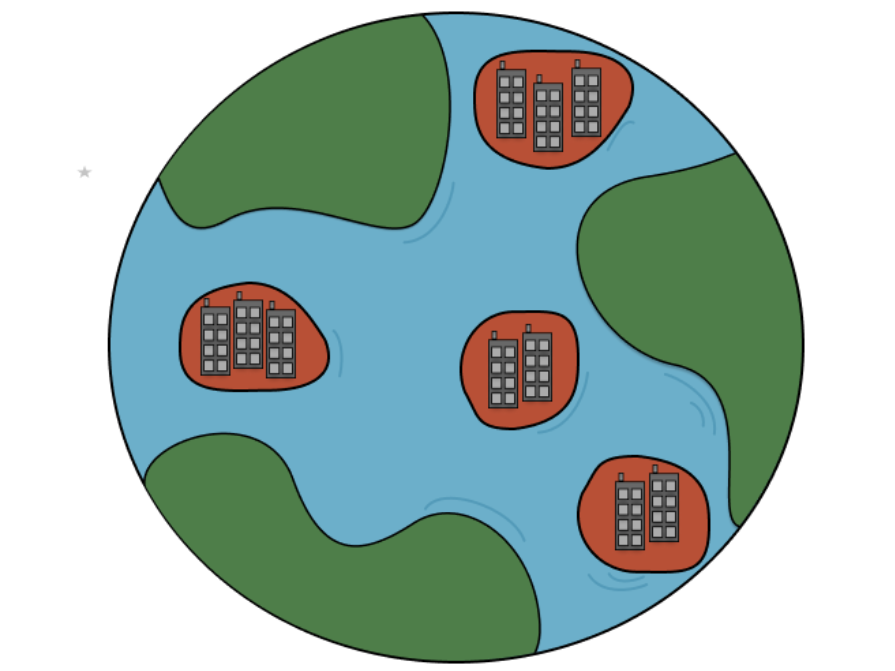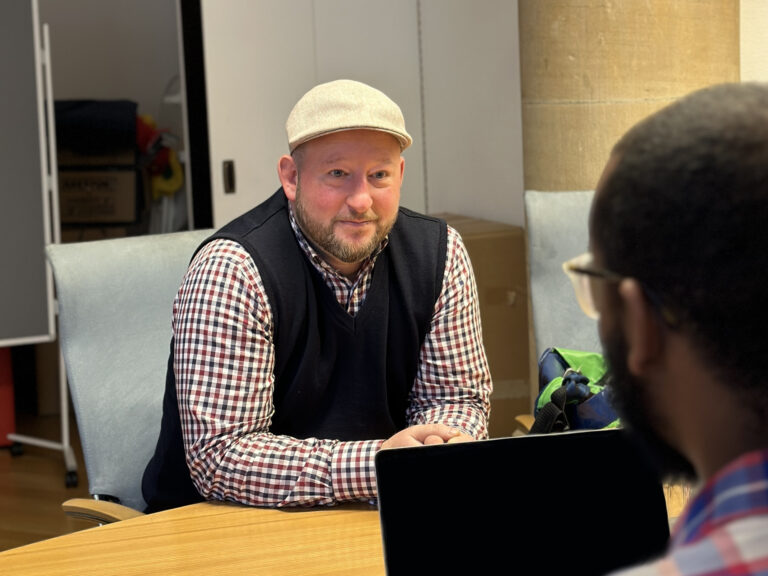The Rise in Urbanization
As the worldãs population quickly approaches 8 billion people, many believe that more people will move to cities. However, moving into cities requires grey infrastructure, or structures such as roads, dams, and not porous buildings (spaces that do not have drainage), and when not balanced correctly with green spaces, urban heat islands can form. Urban heat islands are areas that are significantly warmer than their surroundings largely because of their infrastructure that tends to absorb more heat.ô
Why there are Disproportionate Impacts
People of color are disproportionately affected by urban islands. This is largely based on the history of redlining that exists in the United States. Redlining is the process in which people of a certain racial group were forced to live in certain areas because they were considered a higher risk to society, or because of other racist beliefs. Redlining practices divided communities to be segregated and create areas in which a particular ethnic group is dominant. Since people of color were historically forced to live in certain areas that were separate from most white populations, they experience the effects of urban heat islands differently. In fact, urban heat islands in communities of color can be upto thirteen degrees fahrenheit (minus one degrees Celsius) warmer than surrounding areas. This means that the people living in these areas are highly susceptible to health complications such as heat stroke which impacts their right to a certain quality of life.ô
Policy Planning and Law
Urban heat islands are an example of procedural justice because of the way that resources in infrastructure building or consciousness are not being implemented fairly. If communities of color are being placed and labeled to live in undesirable areas, for being considered of a ãhigher riskã, then the amount of attention that goes into building those communities face the same amount of neglect as they received when being forced to live there. This is still seen in the US today. The US city Portland, in the state of Oregon has the highest heat discrepancy of urban heat islands with about a thirteen degrees fahrenheit difference in areas that are predominantly populated by African Americans. The effects of this are so damaging that heat related health complications kill more Americans every year than any other weather related disaster.ô
Since areas in which communities of color live were historically forced to live separately, a direct relationship can be made with the attitudes of government officials or planners that decide the infrasture and composure of these areas. This also is seen to such a dramatic effect that there are micro heat islands specifically where there are more people of color. This means that there are pockets of seeing public officials and planners consciously deciding to place green spaces in whiter parts of a community.ô This is an example of environmental racism and procedural justice because the procedure in which resources are chosen to be allocated is highly biased and dependent on certain demographics.ô
A principle that can be implemented for urban islands as an environmental justice issue is the one that ãmandates the right to ethical, balanced, and responsible uses of land, and renewable resources in the interest of a sustainable plant for humans and other living thingsã. Urban heat islands are by NO MEANS a balanced or responsible use of lands for people or other living things because they unequally affect certain population groups.ô
Green Spaces to combat Urban Heat Islands
Green spaces are areas meant for either a park, plant life, or kinds of natural environment. Creating more green spaces through urban areas in a balanced fashion would be implementing environmental justice principles and more respectful to other living things. This is because green spaces can not only lower the amount of habitat destruction that would occur from removing the natural environment, but also by lowering the temperature of urban heat islands. Green spaces can lower the surrounding temperature when plants are able to capture greenhouse gases such as CO2 and convert them to oxygen via photosynthesis. In fact, the US National Library of Medicine and Health published an article that found larger parks and forests could reduce daytime temperatures by up to 33 degrees fahrenheit (0.94 ô¯C). With such a dramatic impact on temperature, implementing green spaces can be immensely powerful to combat the disproportionate effects of urban heat islands and help people live in much safer environmental conditions.ô
References
Anderson, M. (2020, January 14). Racist Housing Practices From The 1930s Linked To Hotter Neighborhoods Today. Retrieved from https://www.npr.org/2020/01/14/795961381/racist-housing-practices-from-the-1930s-linked-to-hotter-neighborhoods-today
Boyd, B. (2019, December 02). Urbanization and the mass movement of people to cities. Retrieved April 29, 2021, from https://graylinegroup.com/urbanization-catalyst-overview/



